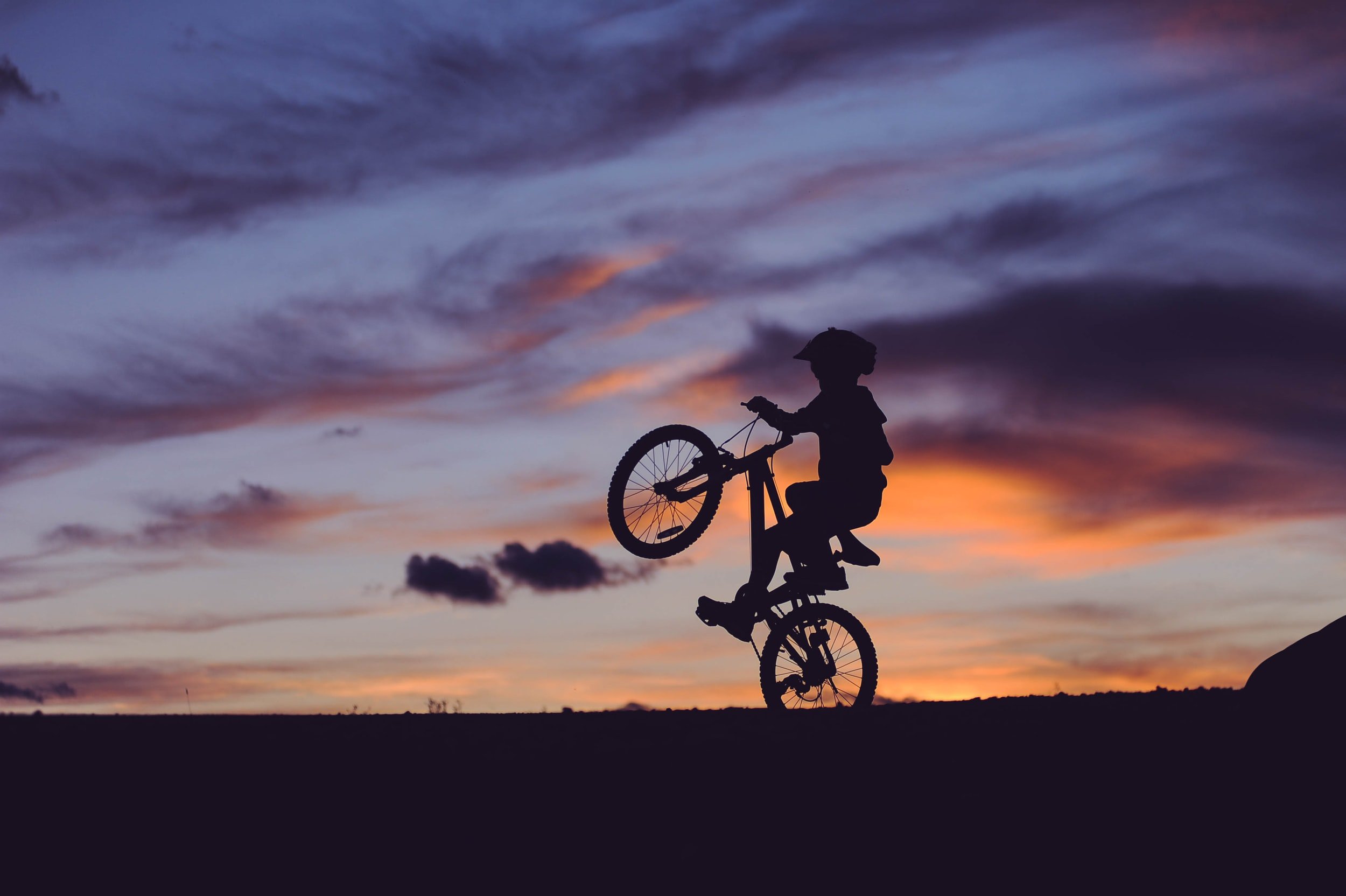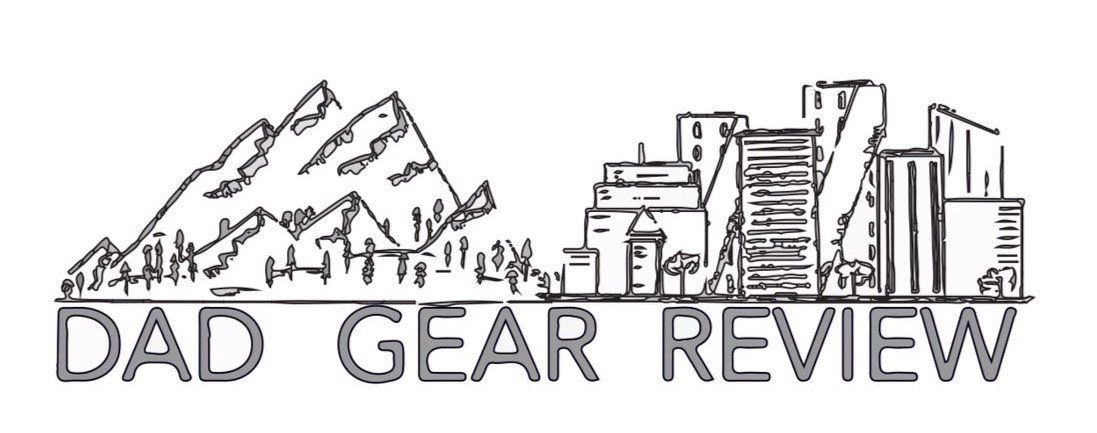
Mountain Biking Safety for Kids, According to the Experts
Learning how to ride a bike is a rite of passage for every kid – with the ability to ride a two-wheeler comes more freedom, more excitement, a great way to exercise, a mode of travel, and overall more fun. But just because a kid has learned how to ride a bike does not mean he or she is ready to ride any bike, nor does it mean the young cyclist is ready to ride in any conditions.
Before you set a young rider loose on the trail in a mountain bike’s saddle, it’s important to make sure the kid is ready for the unique challenges that come with off-road riding, and that they are equipped with the best kids’ mountain bike gear for safety, too.
While we’re a family of cyclists, and while some of us enjoy riding at high speeds over off-road terrain, mountain biking experts we are not. So we found a couple of folks who are to check in with.
Ian Moore is the Cannndale MTB Product Manager (and yes, MTB is an acronym for mountain bike), while Burton Avery is the brand’s Pavement Road Manager – both are avid bikers, both are dads, and both take their jobs seriously, meaning safety is always first. And fun a close second.
What are the main differences between mountain biking and the regular bike riding most kids are used to?
“Most regular kids’ bikes are single-speed that have a coaster brake or one hand brake and a coaster brake, with usually 20” or smaller wheels,” says Ian Moore. “These bikes are aimed at just getting the kids rolling or riding around the neighborhood or into ‘BMX’ style riding. A mountain bike is typically 24’’ wheels or larger and with front and rear hand brakes and multiple gears. Typically, it takes the kids a little while to get used to shifting and braking but, as we all know, kids are pretty adaptable so there is not a big learning curve.”
“The kinds of riding kids do today really varies by region and age, so it’s hard to make broad generalizations,” adds Burton Avery. “Mountain biking in its simplest form is off-road riding usually done on dirt trails known as singletrack or even jeep roads, known as double track. Mountain biking varies by region: some trails are super smooth; others can be filled with rocks and roots.
What are the primary safety concerns when it comes to kids and mountain biking?
“The biggest safety concern is the difficulty of the trail,” Avery says, going on: “Trails come in all shapes and sizes. The riders’ skill needs to match the trail. Mountain bike trails are normally marked by difficulty. Riders should start with the easiest trails and work their way up. Riders should always feel comfortable with the terrain and distance they are riding.”
Moore added: “I think the big thing is making sure they always wear their helmet, that it is in good condition, and that they wear it correctly. In addition, having them understand the terrain that they are in is dependent on where you live so make sure they have an appreciation for the risks that come with the terrain. If you live in the mountains, the terrain will be vastly different than maybe living in the Midwest where mountains aren’t as large. There is definitely a discussion to be had about what to expect on a trail in different places.”
What constitutes necessary mountain biking gear for kids?
“A helmet, some sort of hydration, whether that is a water bottle on the bike or a hydration pack, closed toed shoes… and a bike,” Moore said with a smile. “Most everything else is a bonus, but those would get them out there.”
Avery said: “This is really based on trails you have available to you. A helmet and a bike that feels comfortable to you on dirt trails is the best place to start.”
How should parents select the right mountain bike for a kid, based on size, location, skill level, activity, and other metrics?
“A bike shop is really the best place to start,” Avery says. “Bike shops are experts in knowing the trails in the area and being able to assess skill to match you to the appropriate bike.”
Moore said: “Size is the most important [factor]. Kids need to feel comfortable handling their bike. Parents often want the bike to last while the kid grows – I understand this; I have two kids! However, if the bike is too big and the kid does not feel comfortable there will be push back using it. There is a good market for used bikes in smaller sizes so it is possible to pass the bike along to another family member or resell the bike.”
What are the best ways to introduce kids to mountain biking and get them safe, comfortable, and enjoying the sport?
“Take them riding, make it fun with no pressure,” said Moore. “Just let the kids get their feet wet and find what they like. If they need to stop every mile for fruit snacks, let them, especially if it helps them enjoy it! Depending on where you live you can look for trails that offer a variety of terrain to help them become more comfortable on the bike. They can also start exploring. Sometimes they might be more adventurous and tackle everything they see, or maybe a little bit more timid and ease in until they are comfortable. Repetition often helps – if you go back to the same trail, kids will know what to expect, and they may find the ride gets easier and easier each time. It will also help build their confidence.”
To that, Avery added: “Take it slow. Make it fun. Create your own skills courses in your yard to increase confidence and learn new skills. And yes, snacks always help!”
What are common mistakes novice mountain bikers make, especially young riders.
“Going on trails that are above their skill level or that are too long,” Avery said.
Moore also noted: “When riders are just starting out, they’ll often start looking at the trail right in front of them. The best place to look is the trail ahead – about 15 feet ahead. If you do that, you’ll know what’s ahead and have time to react and adjust. The bike goes where you go. It’s also important to relax and move around on the bike. If you are too rigid, it’s harder to control the bike. I like to tell people to pretend they are like Jell-O Jigglers. It will help riders move with the trail, not over correct or steer into something you’d want to avoid.”
What are the benefits of mountain biking for kids?
“The benefits are the same for kids or adults,” Avery said. “We all need daily activity, and mountain biking can be a fun and exciting way to get outside. Mountain bikes provide feelings of adventure, accomplishment and quality shared time together.”
Moore agreed, saying: “The [benefits are] fresh air, sunshine, and friendship, to name a few. It is also good for hand-eye coordination, and great exercise all around.”
Not all of us are lucky enough to live near actual mountains or even decent hills, so what are some ways people can approximate the sport in areas lacking significant elevation?
“While ‘mountain’ is in the name, you don’t actually need or even want real mountains,” Avery said. “There are mountain bike trails in every state. Elevation and mountains require a lot more power than most kids have. Flat or gently rolling is where it is at.”
Moore agreed, saying: “Trails exist all over. Riding in places with limited elevation can be very fun on a well-built trail. There are many resources available to find local trails. IMBA, the International Mountain Bike Association, has a comprehensive list of local trail networks. Your local bike shop will also be able to offer lots of recommendations as well, and apps including Ride with GPS and Strava have ‘explore’ features that highlight different types of riding too.”




